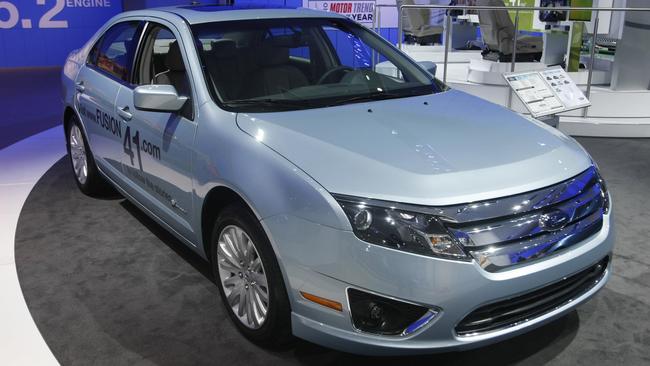Ford Fusion driverless car navigates night test
A self-driving car has successfully navigated winding Arizona desert roads in complete darkness.

A self-driving car has successfully navigated winding desert roads in complete darkness in trials in the United States.
The car drove at night through the Arizona desert without human interference and with its headlights switched off, to test the limits of its artificially intelligent navigation system.
Manufacturers of self-driving cars believe that their vehicles will be much safer to drive at night than human-controlled cars. More than half of all deaths in traffic accidents occur after dark, even though the number of miles driven decreases substantially at night compared with the daytime, according to a UK study.
The test car, a Ford Fusion Hybrid, was equipped with laser-based radar, or light detection and ranging (lidar), as its main road-sensing system. Engineers wearing night-vision goggles were on board ready to take control if the vehicle strayed off the test track.
Wayne Williams, who sat in one of the vehicles, said: “Inside the car, I could feel it moving, but when I looked out the window, I saw only darkness. I was following the car’s progression in real time using computer monitoring.”
Lidar systems on self-driving cars are normally complemented by cameras on the outside, which track road markings, surface patterns and other indicators. However, the cameras are useless in pitch-black conditions, meaning that vehicles must navigate using lidar, radar and, in some cases, global positioning systems.
Lidar is used in most self-driving cars and is indicated by spinning cylinders on the roof. Every second these cylinders shoot out millions of laser beams. The system measures the distance that each beam travels so that the car’s computer can create a constantly updated three-dimensional map of the car’s surroundings.
High-resolution 3D maps in the car’s “brain” contain detailed information about roads, such as signs, topography and buildings. The live lidar maps are matched against these to allow the car to determine its exact whereabouts. The live lidar maps are also complemented by data from the car’s radar, GPS and, in the daytime, its cameras.
“Thanks to lidar, the test cars aren’t reliant on the sun shining, nor cameras detecting painted white lines on the asphalt,” Jim McBride, from Ford, said. “Lidar allows autonomous cars to drive just as well in the dark as they do in the light of day.”
Ford’s tests took place on private roads without traffic lights, pedestrians or other obstructions. The company is to triple the size of its autonomous vehicle test fleet to about 30 cars this year.
Four trials of driverless cars will take place in England this year. Pod-style vehicles will be tested in pedestrianised areas of Greenwich, southeast London, and Milton Keynes.
The Times


